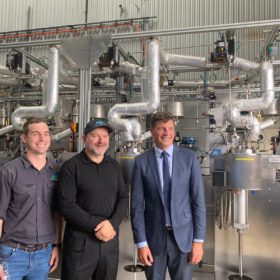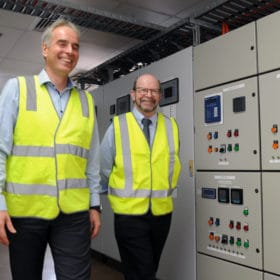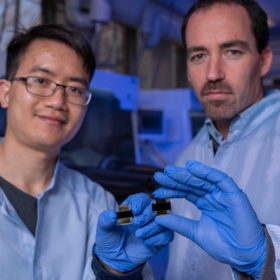ARENA funds UPowr’s effort to improve DER with customer insights
The Australian Renewable Energy Agency is helping to fund a trial by Distributed Energy Resources firm UPowr which will monitor solar customers interested in incorporating a home battery system. The aim of the project is to better incorporate customer experience insights into the design of DER products.
Angus Taylor launches $50 million carbon capture fund despite long road
As present affairs of state attest, sweeping things under the rug is the preferred strategy of the Morrison Government, and hence its $50 million investment in carbon capture and storage (CCS). According to a recently published report from IDTechEx, CCS faces a difficult few years and a long way to go. Unfortunately, even if he does reach its forecasted scale by 2040, its capacity to remove emissions from the atmosphere in any hurry is negligible.
UNSW researchers to develop roadmap for using excess renewables to power industry
The University of New South Wales along with several other universities and the CSIRO are embarking on a feasibility study into how New South Wales can utilise excess renewable energy to make fuel, chemicals and feedstocks for industry. The aim is to develop a plan for how fuels and chemicals such as green hydrogen and ammonia produced from renewables can decarbonise industry and grow manufacturing.
Donated Hitachi ABB microgrid simulator to grow renewable-energy capabilities in the NT
Like a flight simulator for power system designers, the Hitachi ABB facility is now in the hands of the Northern Territory’s Charles Darwin University where it will help build knowledge and capability on the Territory’s road to 50% renewable electricity by 2030.
Swinburne researchers’ novel catalyst to produce green hydrogen from seawater
Researchers from Swinburne University and China’s Shaanxi Normal University have managed to develop a novel catalyst for highly efficient production of green hydrogen from seawater via solar. This catalyst, which required researchers to invent a prototype device called a ‘Ocean-H2-Rig’, highlights the potential of this technology and that we are only just now starting to scratch the surface.
Improving PV-powered water electrolysis with external fields
Australian researchers have analysed different ways to improve the efficiency of PV-powered water electrolysis for hydrogen generation. They include the use of magnetic fields, light energy, ultrasonic fields, and pulsating electric fields. Energy costs remain prohibitive, but molecular movement and the redistribution of molecules in water during electrolysis could open a path to viability.
Green ammonia breakthrough a potential boon for solar-powered exports
Chemical engineers at the University of New South Wales and the University of Sydney have made a significant technological breakthrough in the development of green ammonia. The breakthrough could not only alter the global ammonia industry, but more easily use solar to produce green ammonia for export to countries like Japan and Germany instead of straight hydrogen.
VIC Govt funds experiment to test benefits of solar in orchard farming
Unlike other nations with more limited land and faster growing populations, Australia has not yet understood the symbiotic benefits which accrue when solar PV and agriculture are combined. This week, the Victorian Government announced its Horticulture Solar Energy program and $5 million in funding for the Tatura SmartFarm to experiment with solar atop a pear orchard.
Complementary hybrid PV systems can reduce reliance on storage
Looking back over years of research into the topic of hybrid systems based on different combinations of solar, wind, hydro and other renewables, an international group of scientists found strong potential for strategies to exploit complementarity between the different sources integrate more intermittent renewables onto regional and national grids. The scientists present a series of conclusions and recommendations that aim to push research in hybrid renewables forward.
Australian researchers to set solar PV pace following $4.5 million funding boost
Researchers at the Australian National University (ANU) will look to “set the pace” with the development of next-generation solar cell technology after receiving a $4.5 million funding boost.















